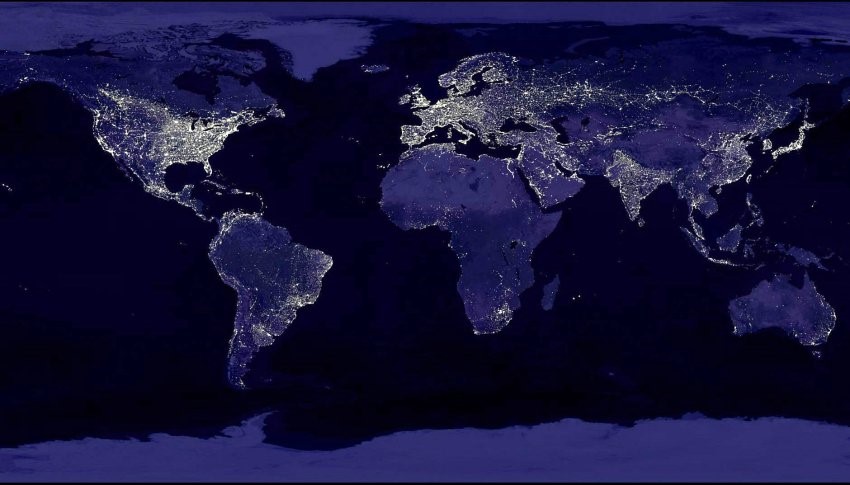
By Colin Green, SLCgreen Fall Intern
Can you remember a time when you lay on the ground under a cloudless night gazing up towards the heavens, making wishes on shooting stars? Have you ever done this within the city? Probably not, because of light pollution.
Humans have lived with dark starry skies for most of our history. This connection to the celestial bodies has helped guide the natural rhythms of our bodies, but recently, in tandem with rapid urbanization, dark skies are disappearing from our lives. Light pollution is taking overnight skies across the country, but it doesn’t have to.
Light pollution comes in a few different varieties that affect us and our environment differently. The first form is called SKYGLOW and it is what usually comes to mind when thinking about light pollution. This is the light that is projected towards the sky creating an illuminated dome in urban areas around the world (80% of World Population Lives under Skyglow).

The next is GLARE. This is caused by unshielded lights shining directly in your eyes. A good way to think of this one is a car driving at you with their high-beam lights on.
The third type of light pollution is called LIGHT TRESPASS. This happens when an unshielded light shines into an area where it is not intended. A neighbors light shining through your window is a great example of this.
Fortunately, with more thoughtful lighting these forms of light pollution can be avoided. This has positive effects on human health, safety, the environment, and energy efficiency.
Human Health
- Proper lighting positively affects human health by not disrupting our natural circadian rhythms.
- Artificial light can reduce the body’s natural production of Melatonin, causing a number of health risks.
Environment
- Artificial lighting creates ecological consequences by disturbing insects, turtles, birds, bats, fish, reptiles, and other wildlife species. Limiting these light sources can help mitigate these effects.
Energy Efficiency
- 30 percent of all outdoor lighting in the U.S. alone is wasted.
- Installing quality outdoor lighting could cut energy use by 60–70 percent, save billions of dollars and cut carbon emissions.
- LEDs, compact fluorescents (CFLs), dimmers, motion sensors, and timers can help to reduce average illumination levels and help reduce energy use.
While Salt Lake City does not yet have a citywide dark skies lighting ordinance, we’ve begun implementing best practices in retrofitting public street lighting. Our internal Sustainability Policy also calls for using the International Dark-Sky Association and the Illuminating Engineering Society of North America’s Model Lighting Ordinance as a guide whenever practicable when upgrading exterior lighting in order to provide effective and safe outdoor lighting while conserving energy.
Here’s how you can help (recommendations pulled from University of Utah Department of City and Urban Planning):
- Only use lighting when and where it’s needed
- If safety is concern, install motion detector lights, dimmers, and timers
- Properly shield all outdoor lights
- Keep your blinds drawn to keep light inside
Fortunately, here in Utah, we can all make a difference. And we’re lucky to still have access to many dark skies, with nine certified dark sky parks spread out across the state. While the dark sky resource remains, it is something that could be lost if they aren’t valued as our city and state grow. To value darkness, is to understand its benefits and how to protect it.
